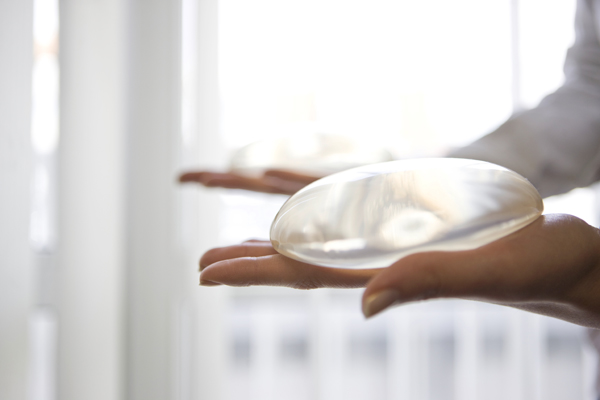Body contouring surgery to remove excess skin improves long-term weight control in patients after gastric bypass surgery, reports a study in the October issue of Plastic and Reconstructive Surgery®, the official medical journal of the American Society of Plastic Surgeons (ASPS).
Patients with body contouring present better long-term weight control after gastric bypass, according to a study at University of Geneva, Switzerland. Since maintaining weight loss to reduce long-term health problems is the key goal of bariatric surgery, the researchers believe that body contouring should be considered reconstructive rather than cosmetic surgery for patients who have achieved massive weight loss.
Better Long-Term Weight Control after Body Contouring
The researchers compared long-term weight outcomes for two groups of patients who underwent gastric bypass surgery. In 98 patients, gastric bypass was followed by body contouring procedures to remove excess fat and skin. A matched group of 102 patients with similar characteristics underwent gastric bypass alone, without body contouring.
Body contouring surgery usually consisted of abdominoplasty (“tummy tuck”), often with other procedures to remove excess skin and tissue from the breasts, legs and upper arms. Within two years after gastric bypass, the patients had lost an average of nearly 100 pounds. In subsequent years, patients who underwent body contouring regained less weight: an average of just over one pound per year, compared to four pounds per year for patients who had gastric bypass only.
Seven years after gastric bypass, patients who underwent body contouring surgery achieved an average weight of 176 pounds, and those with bariatric surgery alone, 200 pounds. Patients who underwent body contouring had regained about four percent of their initial body weight, compared to 11 percent for those who had gastric bypass only. After accounting for the weight of excess skin removed, average weight regain was about 14 pounds in patients who had gastric bypass plus body contouring, compared to nearly 50 pounds with gastric bypass only.
Body Contouring Should Be Considered Essential Part of Bariatric Surgery
Bariatric surgery produces fast, massive weight loss in morbidly obese patients. Unfortunately, many patients regain much of their body weight in the years after gastric bypass, putting them back at increased risk of obesity-related health problems.
A recent study in Plastic and Reconstructive Surgery reported significant improvements in quality of life for patients who underwent body contouring after gastric bypass. The new study shows that patients who have body contouring surgery are also more likely to keep weight off after gastric bypass. Because of this improvement in long-term weight control, bariatric surgery is more likely to be considered an effective procedure – from the standpoint of reducing obesity-related health risks – if followed by body contouring.
Colleagues believe this study adds to the argument that body contouring should be considered an essential part of successful bariatric surgery and, because of its favorable effects on patient health, should be covered by insurance plans. The researchers conclude, since plastic surgery after massive weight loss is mandatory for quality of life improvement and weight loss maintenance in many patients, body contouring must be considered a reconstructive surgery for those who have achieved massive weight loss.
Dr. Mark Bishara provides a wide range of cosmetic procedures, including body contouring, to help patients look and feel their best. These procedures are designed to improve the appearance of the face and body through minimally invasive techniques that provide highly effective results. Many of these procedures can be combined in order to achieve your desired appearance. Please call our office for more information at (817) 473-2120 or click on the button below
Augmentation mammoplasty, or breast augmentation is a surgical procedure to increase the size, shape or fullness of a woman’s breasts. The surgeon places silicone, saline or alternative composite breast implants under the chest muscles or breast tissue.
Breast augmentation is done to:
- Enlarge breasts that are naturally small.
- Restore breast size and shape after pregnancy, weight loss or breastfeeding.
- Restore symmetry when the breasts are asymmetrical
- Restore the breast(s) after surgery as treatment for breast cancer or some other condition or event that affected the size and shape of the breast.
Breast enlargement can boost self esteem- women usually experience a significant boost in self-esteem and positive feelings about their sexuality after undergoing breast enlargement.
98% of women who underwent breast augmentation surgery said the results met their expectations. Women also reported improvements in quality of life and self-esteem after their procedure.
A study, involving 225 women who were followed for five years, found that:
- Patients said they were “back to normal” within 25 days of their surgery
- 85% said their new breast size was “just right”
- 13% said a larger size would have been better
- Less than 2% would have preferred a smaller size
- 1% were not happy with their scars, which are usually in the crease under the breast
- 75% thought their breast firmness was “just right”
- 98% said their results met with their expectations
What are breast implants?
A breast implant is a medical prosthesis that is placed inside the breast to augment, reconstruct or create the physical form of the breast.
The outer layer of breast implants is made of firm silicone. The inside of the implant is filled either with salt water (saline solution), silicone gel, or a composite of alternative substances. Makers of breast implants say they should last for at least ten years.
There are three main types of breast implants:
-
- Saline implants – filled with a sterile saline solution (biological-concentration salt water 0.90% w/v of NaCl, ca. 300 mOsm/L.) which is held within an elastomer silicone shell. These implants can be filled with different amounts of saline solution, which may affect the feel, firmness and shape of the breast.If this type of implant leaks, the solution will be absorbed and expelled by the body naturally.
-
- Silicone implants – filled with a viscous silicone gel which is held within an elastomer silicone shell.If a silicone-filled implant leaks, the gel will either stay in the shell or escape into the breast implant pocket. A leaking silicone-filled implant might not collapse. Patients choosing this type of implant should carry out more regular checks with their doctor compared to those on saline solution implants. The condition of the implants can be determined with an MRI or ultrasound scan.
What happens during the breast augmentation procedure?
Anesthesia
The patient may have a choice of general or local anesthesia. Under local anesthesia the patient is awake and only the surgical area is numbed. However, in most cases the procedure is done under general anesthesia.
The incision
The surgeon and patient should discuss incision options. The doctor should explain which are most suitable for the patient and her desired outcome.
The following incision options are possible:
- Inframmammary incision – in the crease under the breast.
- Transaxillary incision – in the armpit (axilla)
- Periareolar incision – around the nipple
The choice of which incision to use depends on several factors, including the degree of enlargement, the patient’s anatomy, the type of implant, and surgeon-patient preference.
Inserting and placing the breast implant
The breast implant is inserted into a pocket. Today, there is a choice between two types of placements:
- A submuscular placement – under the pectoral muscle. When placed here the patient may take slightly longer to recover, compared to subglandular placement, and may also experience a little more post-operative pain.
- A submammary (subglandular) placement – behind the breast tissue, over the pectoral muscle.
Techniques used today for placing breast implants have significantly improved recovery times.
The incisions are closed
The surgeon closes the incisions with layered sutures (stitches) in the breast tissue, and with skin adhesives, sutures and surgical tape to close the skin and keep it closed.
Initially, there will be evident incision lines. These will fade with time.
View the results
Please view our website at www.markbisharamd.com for even more before and after pictures of some of our patients.
Breast augmentation results are visibly evident straight away. There will be some swelling caused by the surgery, which will resolve within a couple of weeks. As the swelling dies down and the incision lines fade, the patient will have a better idea of whether the procedure met her expectations.
Dr. Mark Bishara provides a wide range of cosmetic procedures to help patients look and feel their best. These procedures are designed to improve the appearance of the face and body through minimally invasive techniques that provide highly effective results. Many of these procedures can be combined in order to achieve your desired appearance. Please visit our website for before and after pcitures of patients at www.markbisharamd.com. Please call our office to receive more information at (817) 473-2120.
The US Food and Drug Administration (FDA) has approved use of onabotulinumtoxinA (Botox Cosmetic, Allergan) for temporary improvement in the appearance of moderate to severe lateral canthal lines, also known as crow’s feet, in adults. Botox Cosmetic is currently the only FDA-approved drug treatment option for lateral canthal lines, the FDA said today.
The agency approved Botox Cosmetic in 2002 for the temporary improvement of glabellar lines (frown lines) in adults. Botox Cosmetic works by keeping muscles from tightening, so wrinkles are less prominent.
Botox Cosmetic is administered via intramuscular injections. Treatment for both frown lines and crow’s feet can be given at the same time, the FDA said.
Boxed Warnings
The approval of Botox Cosmetic for treating lateral canthal lines was based on 2 clinical efficacy and safety studies involving 833 adults with moderate to severe lateral canthal lines who were randomly assigned to receive either Botox Cosmetic or placebo.
The results showed that those treated with Botox Cosmetic had greater improvement compared with placebo in the appearance of lateral canthal lines, the FDA said.
BOTOX® is a prescription medicine that is injected into muscles and also used for the following:
- to treat overactive bladder symptoms such as a strong need to urinate with leaking or wetting accidents (urge urinary incontinence), a strong need to urinate right away (urgency), and urinating often (frequency) in adults 18 years and older when another type of medicine (anticholinergic) does not work well enough or cannot be taken.
- to prevent headaches in adults with chronic migraine who have 15 or more days each month with headache lasting 4 or more hours each day in people 18 years or older
- to treat increased muscle stiffness in elbow, wrist, and finger muscles in people 18 years and older with upper limb spasticity
- to treat the abnormal head position and neck pain that happens with cervical dystonia (CD) in people 16 years and older
- to treat certain types of eye muscle problems (strabismus) or abnormal spasm of the eyelids (blepharospasm) in people 12 years and older
- to treat the symptoms of severe underarm sweating (severe primary axillary hyperhidrosis) when medicines used on the skin (topical) do not work well enough in people 18 years and older

Young Women Undergoing Breast Reduction for Competitive Sports
Simona Halep, 21, went from a 34DD to a 34C.
“I think she really caused a breakthrough, where all of a sudden this was not a taboo topic,” said Megan Greenwell, senior editor at ESPN magazine. “When you see people at the highest levels talking openly about these things that opens the floodgates for other people to discuss it as a real issue.”
And it’s not only professional athletes going under the knife to reduce breast size. Carly Mortensen, 19, plays collegiate softball, and decided to have her bust reduced surgically.
“It just felt uncomfortable for me because I had to wear two sports bras every time,” Mortensen said.
“It was emotionally pretty tough. I wasn’t sure if I was going to be happy with it. If this would help me in life and be a bonus for softball then it’d definitely be worth it.”
More than 100,000 women had similar surgeries last year — some of them, experts say, do it to play sports, according to Cosmetic Surgery National Data Bank statistics.
“We are tending to a lot more young patients who realize there’s a surgery out there that can help them, help them feel better and help them become more athletic,” said Dr. Michelle Spring, a plastic surgeon, told ABC News.
But just how much can breast reduction enhance one’s game? After the surgery, Halep climbed 450 spots in world rankings. She’s now ranked number 18.
“I think it’s definitely helped my play because a lot of it comes from mentally being more confident in myself,” she said.
Halep says she’s looking forward to this softball season, when she takes the field for her first official game.

Not so long ago, when a person went in for a cosmetic procedure, the entire procedure was kept under wraps as much as possible. Though people speculated about whether or not someone they knew had had “work done”, rarely were such things discussed openly in public or even in privacy with friends.
But cosmetic procedures have changed a lot over the years. There are more technologically advanced procedures available today that require a lot less of a financial commitment and significantly less recovery time. The advent of Botox and other injectables and a variety of non-invasive liposuction options have made cosmetic procedures much more accessible and much more appealing to a wider range of people. As a result, more and more people are having cosmetic procedures performed and more and more people are also talking about their procedures more openly. at. Dr. Mark Bishara’s office we strive to help patients feel confident about their cosmetic procedures.


Though more people are admitting to having some sort of work done to cosmetically enhance their appearance, it is generally considered rude to ask another person about cosmetic procedures point-blank. Many people will talk about their cosmetic procedures if they feel comfortable about it, but asking about it considered to be a social faux pas. These days, patients are aiming to create natural looking cosmetic changes and when people notice the work that’s been done (and come right out and say it), this can be perceived as an insult. And what if your friend or coworker hasn’t had any cosmetic procedures performed? Asking could make the person in question feel good about the way they look, or it could make them wonder if they need to consider a cosmetic procedure. Either way, you run the risk of putting your foot in your mouth.
One of the reasons why people change the way they look is because changing one’s appearance alters people’s reaction to their appearance. It’s considered extremely rude to ask a person about whether or not they’ve had cosmetic procedures performed. It is best to let them confess to the procedure by their own volition.
If you suspect someone has had cosmetic enhancements, give them a compliment about their appearance. If that person wants to tell you about their cosmetic procedure, they’ll find an appropriate time or place to do so. Otherwise, you’ll just have to wonder. Remember, cosmetic surgery is not what it used to be and many people do end up spilling the beans. The whole point of cosmetic surgery is to make noticeable changes in one’s appearance and since approximately 9 million people in the United States underwent some kind of cosmetic procedure in 2011, many people feel like it’s counterproductive to keep their procedure a secret. Rather than be secretive, many patients opt to clear the air and take pride in their renovated appearance. After all, who isn’t having work done these days?
To learn more about the minimally invasive and surgical cosmetic procedures that Dr. Bishara’s office offers, please call out office at (817) 473-2120 or click on the button below.









